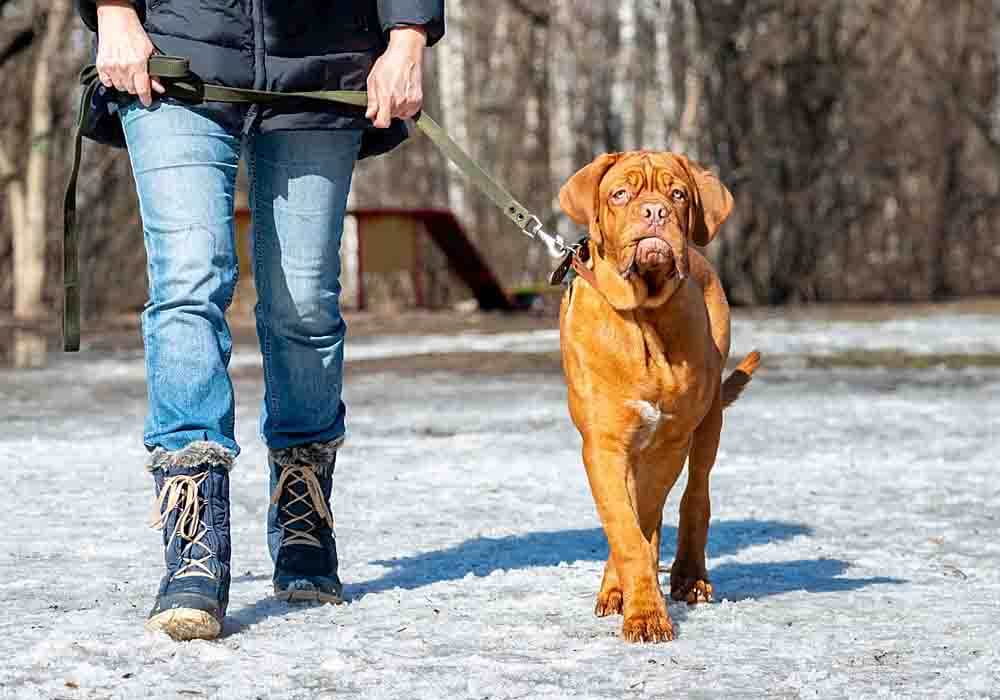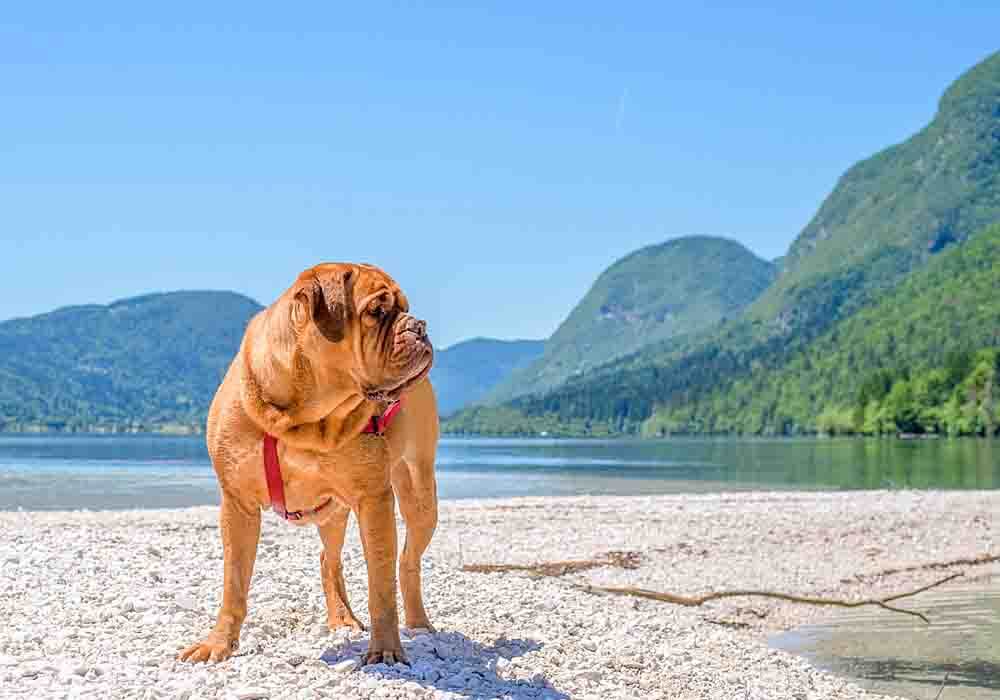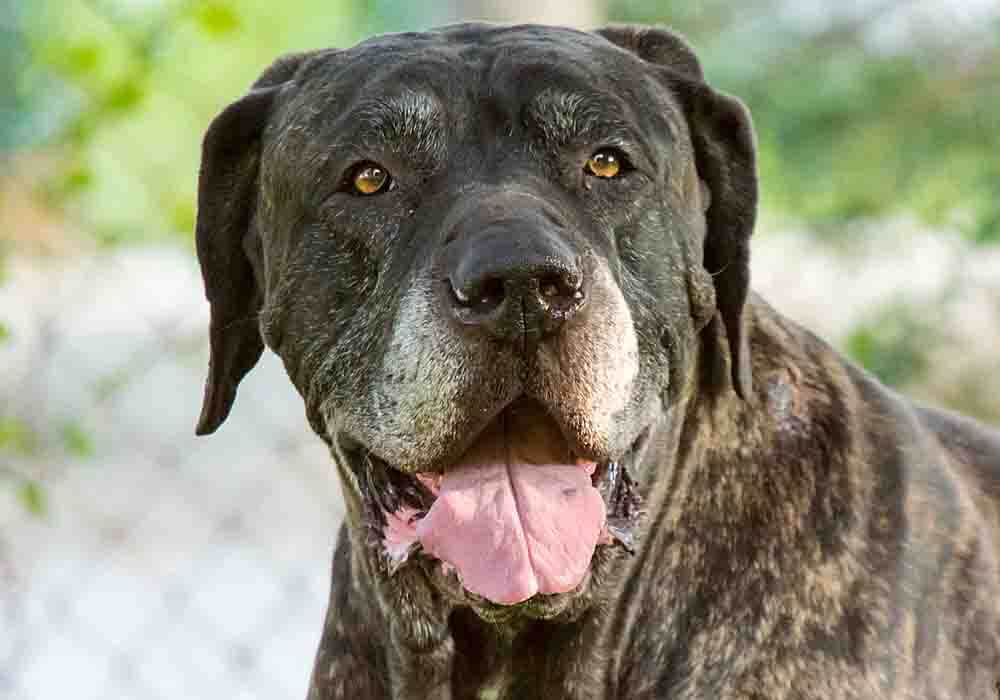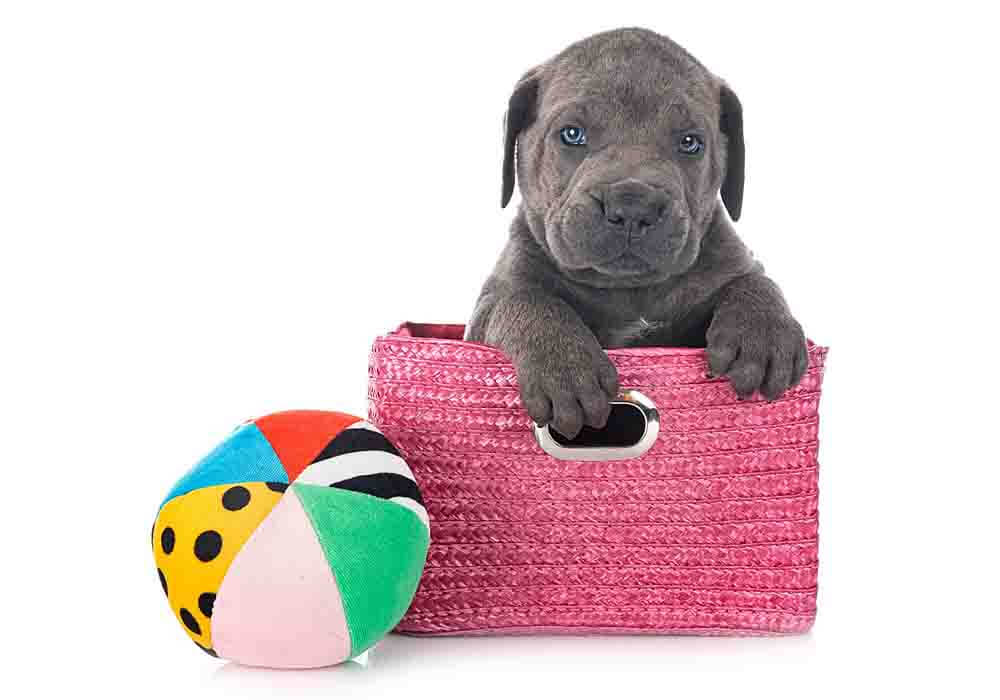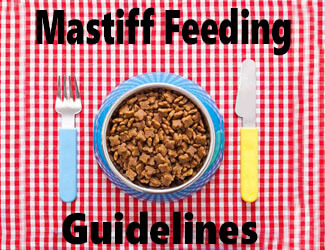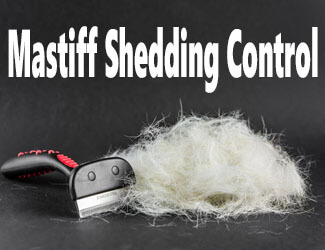Exercise Needs For Mastiffs
For Puppy Or Adult...Here's What They Need
by Ken Alden
Do you know what the exercise needs for Mastiffs are? If your Mastiff is at its happiest when he has the chance to stretch its legs outdoors then he’ll love knowing that you’re reading this!
Exercise Needs For Mastiffs By Age...
- First 20 months: They need regular moderate exercise. Nothing that pounds their joints nor causes them to overheat.
- 20 months to Adult: 10-20 minute long daily walks with limited jogging or running to protect joints should be enough.
When taking your dog out for physical activity, remember that Mastiffs can overheat easily and, due to their size, they won’t appreciate long jogging sessions!
Knowing what exercise Mastiffs need during their youth and adult life is essential to help them grow healthy and happy. Read on to find out everything you need to know about the dos and don'ts of exercising your Mastiff. Before you go, check out the games you can play with your Mastiff for a healthy dog-owner relationship! Read More Below... for mastiffs
Pro-tip: Ever try lifting a Mastiff? Their weight can hurt not only your back but their joints when they hop down from cars, sofas or even your bed. To protect your back and theirs check out the best Mastiff ramps on Amazon.com now.
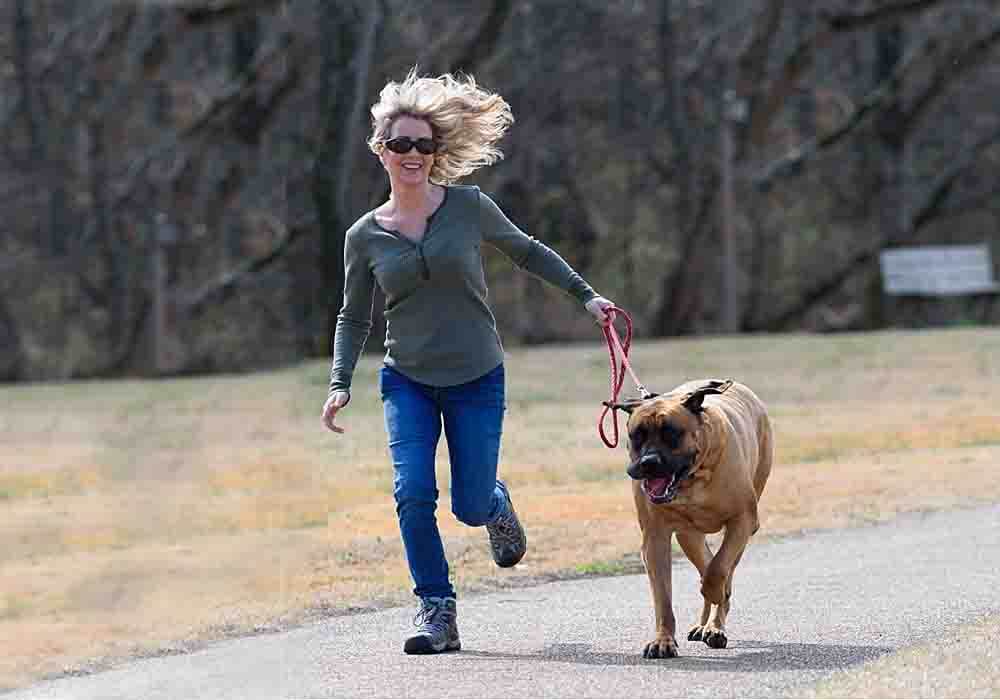
How Much Exercise For A Mastiff Puppy?
Raising a Mastiff puppy can be a challenging and interesting task. While young, Mastiffs are calmer and lazier than other dogs, but physical activity and socialization are important to nurture a confident and well-behaved pet.
While you might be tempted to bring your little puppy to the park and play together for hours, there are some characteristics of Mastiff puppies’ personality and nature to take into consideration.
Firstly, Mastiffs are a giant breed of dogs, which means that your puppy will keep growing until 3 to 3 ½ years of age. Yet, most of the bones and joint development happen within their first 18 to 20 months. At this stage, exercising your puppy properly, without overworking their legs, bones, and joints, is essential to protect them during their growth.
When you start exercising your puppy, remember that it is in their nature to please their owners or family. Due to their energy and size, it is not uncommon for young Mastiffs to end up with an inflamed joint or even more serious injuries.
Pro-tip: Mastiff anxiety, aggression, destructive chewing, jumping up, fearfulness, and other behaviors can be controlled with the right training program.
Here’s a great course that
addresses these issues along with many other dog training basics: Check it out now!
Mastiff Puppy Exercise Routine
For the best results, start building a regular exercise routine following these tips:
- Begin your Mastiff’s training gradually, starting with only short walks to the park.
- Avoid continuous jumping, running, or other forms of demanding physical exercise.
- Keep an eye out for signs of overheating or fatigue.
- Allow them to exercise at their own pace as they will rest when they feel tired.
- Bring water with you during your trips out with your dog.
- Don’t let your puppy jump off or on elevated surfaces (car, porches, decks, etc.)
- Keep your puppy under supervision when playing in your yard or garden
- 10 to 30 minute-long swimming sessions (in warm weather) can help your puppy develop stronger muscles. for mastiffs
In conclusion, short, daily walks of 5 to 10 minutes, along with play sessions, are enough to keep your puppy fit if he is following a nutritious and balanced diet.
How Much Exercise For A Mastiff Adult?
Mastiffs can take up to 3 ½ years to reach full size. At this stage, they can weigh around 200 pounds and be at least 30 inches tall at shoulder height. Around 18 months of age, as your Mastiff puppy’s bones development is almost completed, you can start implementing a more intensive exercise routine.
While full-grown Mastiff dogs can take part in obedience and agility competitions, their training routine is much different from other dogs’ due to their size and personality. Let’s have a look at what to keep in mind when training your adult Mastiff.
- As for any other dogs, exercise and stimulation are important for your Mastiff to release extra stress and tension. Failing to exercise your dog properly can lead to destructive, anxious, or nervous behavior.
- Mastiffs can adapt easily to any living environment, but it is recommended to have at least a small yard or garden for them to play in.
- Due to their size, Mastiffs can overheat easily. Exhausted dogs will show signs of overheating, such as hyperventilation, panting, or dry, pale gums. To prevent this from happening, supervise your dog during exercise and allow him or her to play at their own pace.
Pro-tip: Mastiff's (and their owners) love dog crates…and for good reasons. Crates keep dogs from mischief while you're away, are perfect for house training, for traveling by car, and provide the dog a place to de-stress. Check out the best Mastiff crates on Amazon.com now.
Adult Mastiff Exercise Routine
When devising an effective routine to keep your Mastiff healthy and fit, you should include four types of simulations. These are regular walks, free play, muscle-strengthening activities, and mentally stimulating games.
Let’s have a look at what these include.
- Regular walks: take your dog for a 10 - 20 minute-long walk once or twice a day. If the climate is highly hot or humid, you should consider shortening the walking time or distance.
- Free play: free playing time with toys or other dogs is incredibly stimulating for your Mastiff and can help improve their social skills.
- Muscle-strengthening activities: as we have seen, the bones and joints of your Mastiff will always be their weakest point. Strengthening their muscles through exercise can prevent long-lasting bone conditions.
- Mentally stimulating games: exercise needs for Mastiffs are not limited to physical activities. In fact, this breed is known to have high trainability potential and intelligence.
To unlock the hidden skills and intelligence of your Mastiff, check out the games in the next session of this article!
Train And Have Fun With Your Mastiff
Whether your Mastiff is still a puppy or has reached adulthood, there are a few games that can keep him mentally and physically stimulated without overexerting him. Here are some examples you could try.
- Squats - Similar to normal squats, ask your dog to sit and stand repeatedly for a few minutes. This is a great way to strengthen the leg muscles of your pooch.
- Stair Climbing - Lead your dog slowly up and down a staircase. This can be repeated a few times. Make sure your dog does not jump multiple steps at once or run across the staircase, as this can lead to joint injuries.
- Puzzles - If you are looking for an easy way to mentally stimulate your dog, a puzzle will be your best option. Today, there is a huge range of puzzle toys for dogs that can help them improve their problem-solving skills. These can also be completed by your Mastiff when he is alone in the house and can help him fight temporary boredom.
- Learning and Training - Teaching your dog to execute new commands is a great way to keep them mentally stimulated. If your Mastiff has already mastered easier requests such as “Heel” or “Sit," you could try the more difficult “Watch Me” or “Drop it” commands.
- Jolly Ball - Mastiffs are incredibly strong and powerful creatures that tend to destroy the large majority of the toys they can put their paws on. If you have been looking for a free play alternative that can last longer than one session, these balls are made for large and giant breeds of dogs to exploit their energy in a safe way.
Exercise Needs For Mastiffs...Final Thoughts
When considering the exercise needs for Mastiffs it's important to remember that due to their size and genetics, Mastiffs are prone to joints and bone problems as well as elbow and canine hip dysplasia. While exercise is vital for them to be happy, satisfied, and stimulated dogs during their lifetimes, physical activity should be supervised and planned properly.
To conclude, depending on their age and predisposition, Mastiffs have different exercise needs. Being able to plan daily walks, mental stimulation, and exercise is an essential part of caring for them.

About the Author...
Ken Alden, a dedicated Mastiff owner for over eight years, is acclaimed for his expertise in care, grooming, and training. Read more About Me and my dog Shadow.
- Mastiff Guide Home ›
- Mastiff Care Info & Guides ›
- Exercise Needs For A Mastiff

